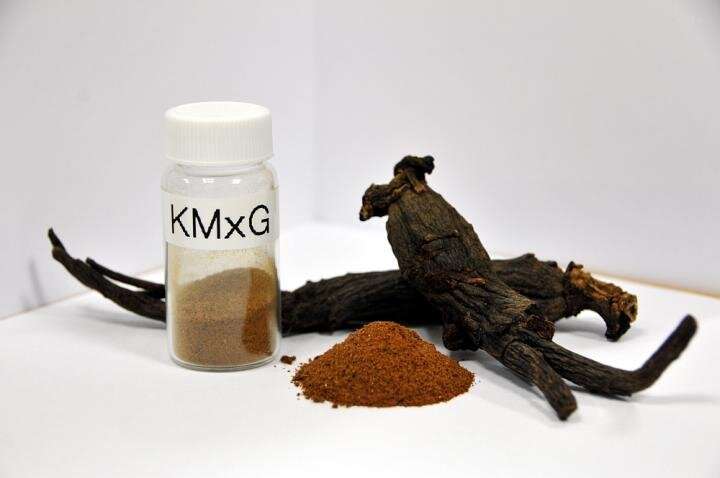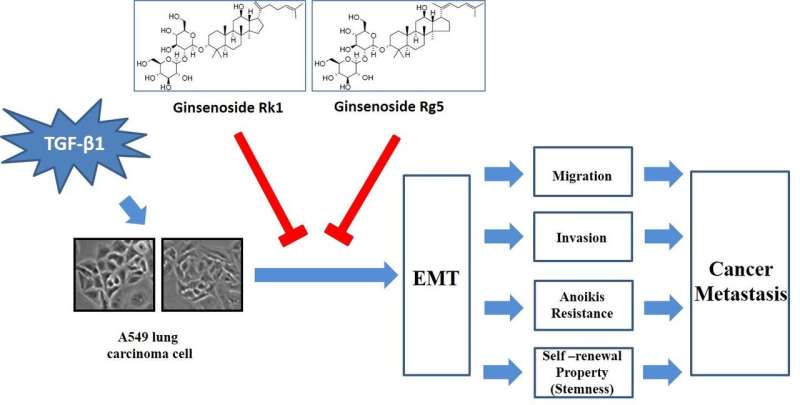KMxG red ginseng manufactured through microwave processing. Credit: Korea Institute of Science and Technology (KIST)
Red ginseng, which has long been used as an ingredient in traditional Korean medicine, has recently drawn increased attention as a functional material for its health-promoting effects. The composition and activities of red ginseng vary depending on the processing method, and this has become an active area of research. Recently, a research team in Korea has discovered that red ginseng has inhibitory effects against lung cancer metastasis.
The Korea Institute of Science and Technology (KIST) reported that a joint study conducted by Dr. Jungyeob Ham from the Natural Product Research Center at the KIST Gangneung Institute of Natural Products and Dr. Hyeonseok Ko of Seoul Asan Medical Center revealed that two components of red ginseng, Rk1 and Rg5, can significantly suppress lung cancer metastasis.
Dr. Ham of KIST developed a new microwave processing method for red ginseng that is based on the same principle as a microwave oven, which, when compared to existing processing methods such as repetitive steaming and drying, increases the concentration of the three main active components, Rg3, Rk1, and Rg5, more than 20 times. The research team previously demonstrated that red ginseng produced by this microwave processing method, which they have called KMxG, is effective against prostate, cervical and skin cancers, and has protective effects against drug-induced kidney damage. This technology was transferred to Ponin Bio Co., Ltd. and is currently being developed for commercialization.
A schematic diagram of the inhibition of lung cancer metastasis by ginsenoside Rk1 and Rg5. Credit: Korea Institute of Science and Technology (KIST)
Unlike normal cells, which die when separated from their original tissue, cancer cells can spread to other tissues where they invade and grow in a process called metastasis. TGF-β1, a cytokine protein that functions as a signaling substance in the body, induces lung cancer metastasis and promotes the development of stem-cell-like properties in cancer cells. The KIST research team treated lung cancer cells with Rk1 and Rg5, the main components of KMxG red ginseng, and showed that both components effectively inhibited processes related to cancer metastasis induced by TGF-β1.
"Although components of red ginseng have previously been shown to kill cancer cells, this study proved that these components of red ginseng have other anti-cancer effects and can inhibit lung cancer metastasis. This provides scientific evidence that may lead to the future development of anti-cancer drugs derived from natural products," said Dr. Ham. He added, "Because we can control the active ingredient contents of red ginseng by using microwave processing methods like the one that produced KMxG, it may be possible to develop customized functional materials for various diseases."
More information: Hyunhee Kim et al, Ginsenosides Rk1 and Rg5 inhibit transforming growth factor-β1-induced epithelial-mesenchymal transition and suppress migration, invasion, anoikis resistance, and development of stem-like features in lung cancer, Journal of Ginseng Research (2020). DOI: 10.1016/j.jgr.2020.02.005
Provided by National Research Council of Science & Technology
























